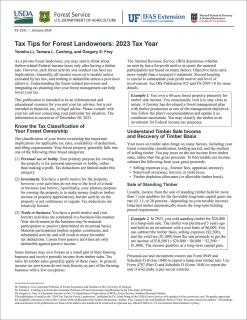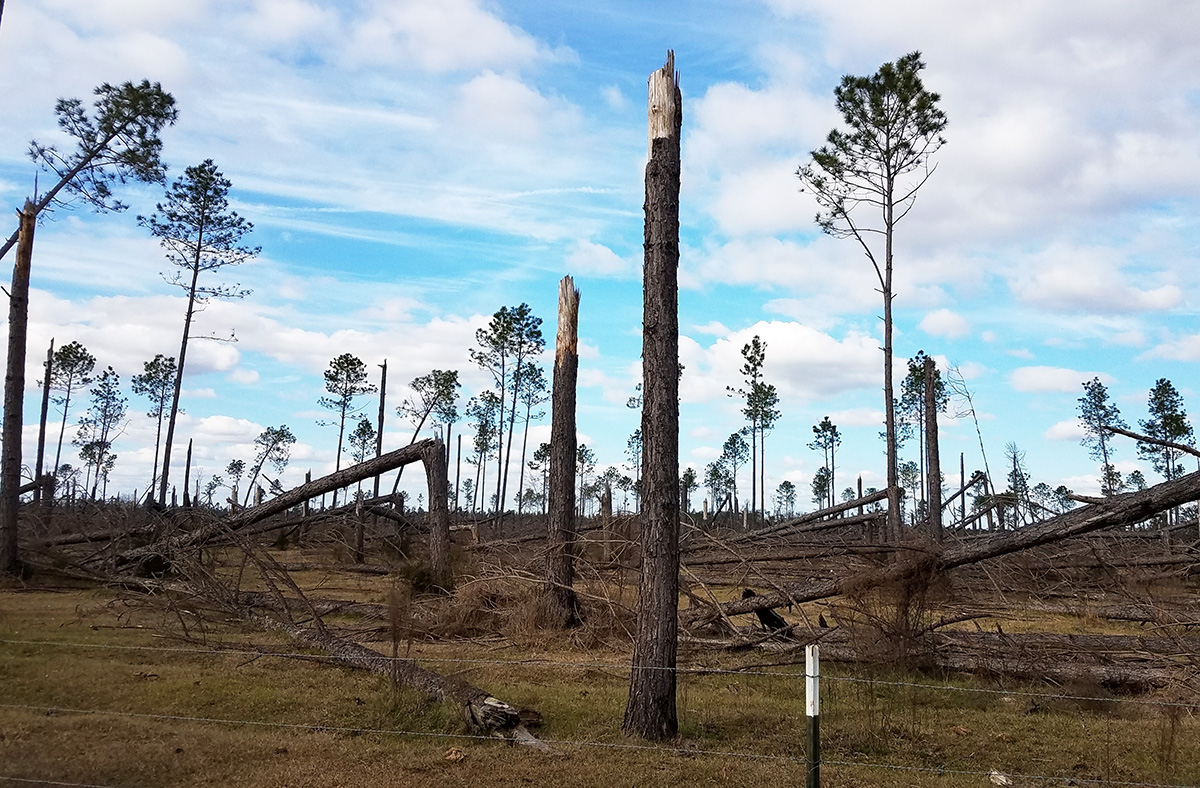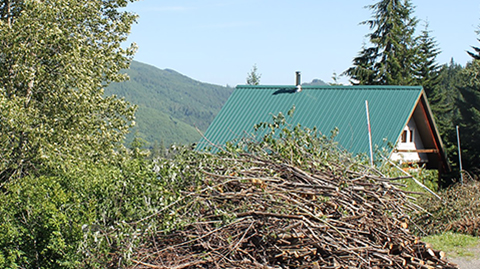
Of the 765 million acres of forests in the U.S., more than half – 443 million acres – is privately owned, of which 288 million acres are owned by private, non-corporate entities such as families. That means more than 10 million private owners control 50 percent of all forestlands in the U.S.
And all those lands have taxable value. The question then is: Are you ready for April 15?
“Many woodland owners think about taxes only after they had a timber sale,” says Yanshu Li, associate professor at the University of Georgia and lead author of the recently published Tax Tips for Forest Landowners: 2023 Tax Year. “The best practice is to integrate timber tax planning into forest management plans and always think about the tax implications before conducting forest activities.”
The Tax Tips for Forest Landowners is an annual publication of the Forest Service, led by the Southern Research Station with academic partners at The University of Georgia Warnell School of Forestry and Natural Resources and the University of Florida’s Institute of Food and Agricultural Sciences.
Family forests provide many valuable goods and services that extend beyond their boundaries, including clean air and water, wildlife habitat, and carbon sequestration. While landowners don’t usually get paid directly for those benefits, there are tax incentives that can be associated with taking care of your land, such as reforestation, sales of wood or loss due to natural disasters.
“One change for the 2023 tax year affecting some forest owners is that investors and business owners are no longer allowed to immediately deduct 100% of the cost of qualifying depreciable property through bonus depreciation. The limit for bonus depreciation in 2023 is down to 80% and will decrease to 0% over the next few years,” says Gregory Frey, research forester for the Southern Research Station and co-author of the Tax Tips. “Forest owners can still deduct those types of expenses through traditional depreciation over multiple years. The new Tax Tips explains that and also contains new information on topics of interest such as flow-through entities and income from forest carbon.”
Today, many landowners are looking at forest carbon income to offset land ownership costs. Income received from those transactions is generally taxable. However, the details still need to be determined because forest carbon is not directly addressed in any existing federal statute or regulation. Tax treatment of the income and its associated expenses may vary based on factors such as the terms of the carbon programs, contract clauses and length, the purpose of forest holdings, the holding period of carbon credits/offsets, and the payment scheme.
Your taxes depend on many factors, including your forest ownership classification, holding period and the method of selling timber. For example, some farmers may own forests as a small part of their farming business and receive periodic income from timber sales. Tax rules for timber sales generally apply in these cases. Income tax provisions do not typically treat forestry as part of the farming business, with a few exceptions.
Of note, ownership classification for tax purposes impacts what provisions apply to you and how you file. There are three tax classifications of your forest ownership:
Forests are for personal use or hobby, meaning you own the land for pure personal enjoyment rather than as a profit maker. Tax deductions are limited.
Your primary purpose for owning the property is a profit motive, but your activities do not rise to the level of a business trade.
You have a profit motive, and your forestry activities are regularly conducted in a business-like manner. The operation of that business depends on what type of tax deduction you may be allowed.
The complexities of some of these issues are why consulting with a tax accountant or tax attorney is recommended.
“Tax law is challenging, and forest owners may only have one timber sale in their lifetime,” says Tamara Cushing, extension assistant professor at the University of Florida and co-author of the publication. “There are sections of the Internal Revenue Code that have quite a bit of gray area or depend on knowledge of other sections of the code. Forest landowners can use Tax Tips as a tool to assist with completing their own return or take it to their tax accountant. “
The Forest Service is currently working to revise the 164-page 2013 Forest Landowners’ Guide to the Federal Income Tax with a goal of publishing the new guide this year.
The U.S. Internal Revenue Service has online information related to timber tax. For specific federal tax assistance, use the IRS assistance information.
See a list of resources to learn about more ways Forest Service programs can help private landowners.






